Indoor gardening has become increasingly popular, especially with the rise of urban living and the need for green spaces. However, not all indoor spaces provide sufficient natural light for plants to thrive. This is where grow lights come in.
Grow lights are artificial lighting systems that simulate natural sunlight to support plant growth indoors. There are various types of grow lights available on the market, each with its own unique features and benefits. In this article, we will explore the different types of grow lights for indoor plants, their pros and cons, and which plants they are best suited for.

If you are interested in Types of Grow Lights you can also be interested in indoor hydroponic systems to help you easily start growing plants and grow tomatoes all year round. Our top articles: Our Picks for the 5 Grow Tent Kits, Picks for the 5 Aeroponics Systems, Our Picks for the 5 Hydroponic Bucket Systems with Buyer’s Guides, and Our Picks for the 5 best indoor vertical Garden, and Led Grow Lights for an indoor plant, and The Best Hydroponic Tower for Indoor Garden.
What is a Grow Light?

A grow light is an artificial light source designed to provide the necessary spectrum of light for plant growth and development. Grow lights are used as a substitute for natural sunlight, especially in indoor gardening settings where natural light may be limited or unavailable.
The spectrum of light emitted by a grow light can be tailored to different stages of plant growth, such as germination, vegetative growth, and flowering. This means that with the right grow light, indoor plants can receive the specific spectrum of light they need to thrive.
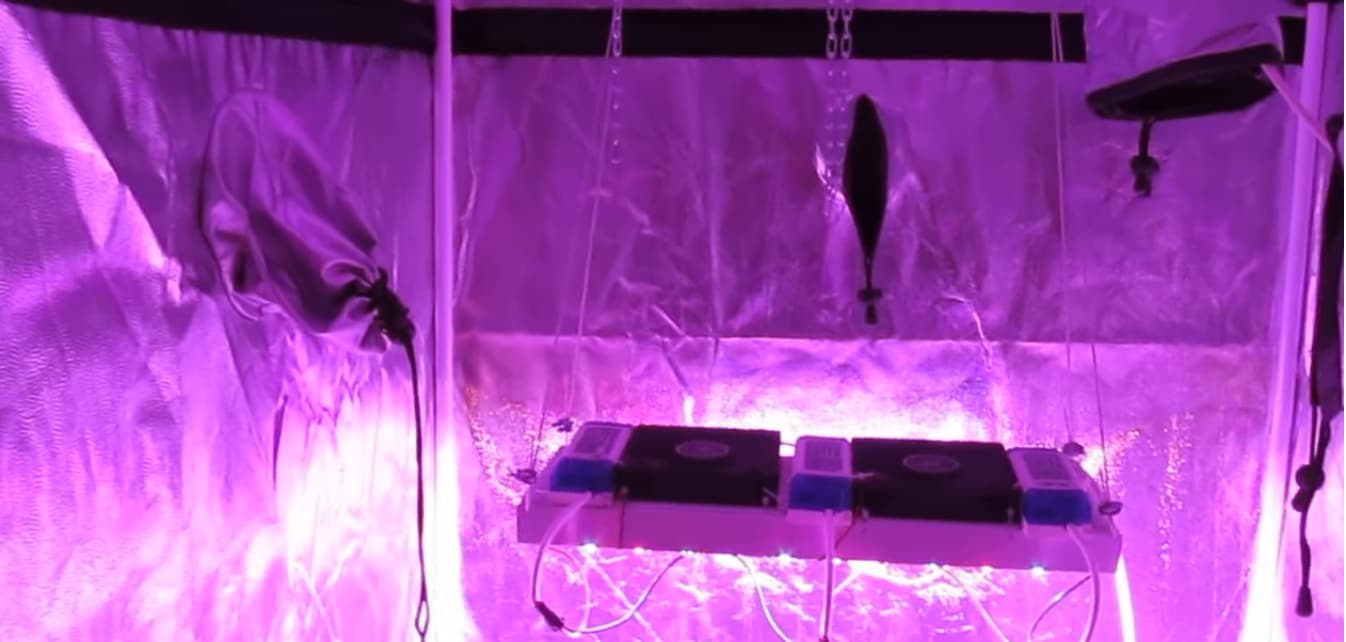
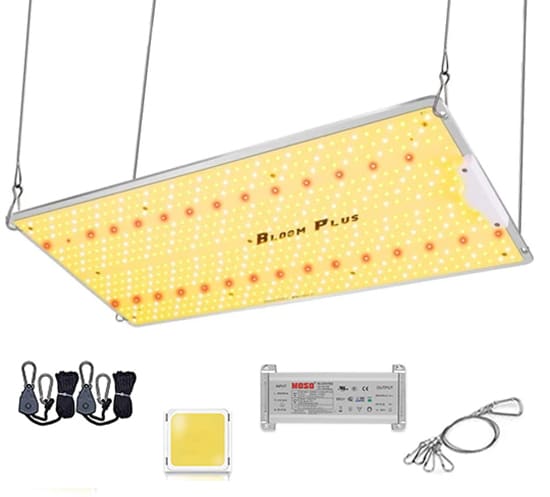 BLOOM PLUS LED Grow Lights, BP 2500W 2X4ft Coverage Grow Light Use with 646packs Samsung Diodes(Includes IR)
BLOOM PLUS LED Grow Lights, BP 2500W 2X4ft Coverage Grow Light Use with 646packs Samsung Diodes(Includes IR)
- For Indoor Hydroponic Plants Seeding Veg and Bloom
- Dimmable Sunlike Full Spectrum Plant Grow Lights
- 30-day money-back guarantee and a trusted 3 years warranty
Can an Ordinary Light Bulb Help Plants Grow?
Ordinary light bulbs may emit some light that is useful for plant growth, but they are not typically effective as the sole source of light for indoor plants. These bulbs are designed to emit a broad spectrum of light that is suitable for human use and aesthetics, but they do not produce the specific wavelengths of light that plants need for optimal growth.
In fact, ordinary light bulbs can produce a lot of heat and not enough of the blue and red wavelengths of light that plants require. The heat generated can also harm the plants or dry out the soil faster.
From my experience, it is recommended to use specific types of grow lights that are designed to provide the optimal spectrum of light for indoor plants. Such bulbs can be adjusted to produce the specific wavelengths of light that plants need at each stage of growth, from seedlings to mature plants. By using the right grow light, indoor gardeners can ensure their plants receive the necessary light for healthy growth and development.
The Reasons for the Effectiveness of Grow Lights
- Adjustable spectrum. Grow lights are designed to emit specific wavelengths of light that are beneficial for plant growth. Blue light promotes vegetative growth and is important for seedlings and young plants, while red light promotes flowering and fruiting and is important for mature plants. Grow lights can be adjusted to provide the right balance of blue and red wavelengths for each stage of plant growth, allowing indoor gardeners to tailor the light spectrum to the specific needs of their plants.
- Intensity. They can provide a high-intensity source of light that is much stronger than natural light. This can be especially beneficial for plants that require a lot of light or for areas where natural light is limited. Grow lights can provide a consistent level of light intensity to plants, allowing them to grow and develop at a faster rate than they would with natural light alone.
- Consistency. Grow lights can provide a consistent source of light to plants, which is especially important in areas where natural light fluctuates throughout the day or in areas where light is limited. This allows indoor gardeners to provide a reliable source of light to their plants, which can help to ensure healthy growth and development.
- Energy efficiency. Many types of grow lights, such as LED lights, are energy efficient and use less electricity than traditional lighting sources. This can be beneficial for indoor gardeners who want to save on energy costs. Energy-efficient grow lights also produce less heat than traditional lighting sources, reducing the risk of overheating and plant damage.
- Customizability. Grow lights can also be customized to provide the specific spectrum and intensity of light that a particular plant needs, allowing indoor gardeners to tailor their lighting setup to the specific needs of their plants.
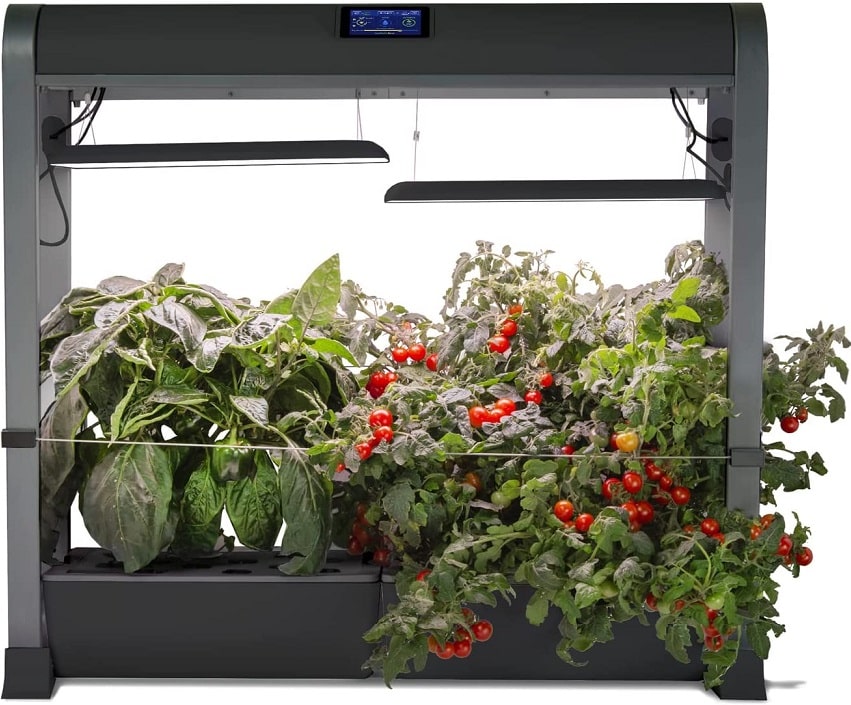
 AeroGarden Farm 24Plus with Salad Bar Seed Pod Kit - Indoor Garden with LED Grow Light, Black
AeroGarden Farm 24Plus with Salad Bar Seed Pod Kit - Indoor Garden with LED Grow Light, Black
- Indoor Garden with LED Grow Light, Black, Automatic timer makes sure the lights go on and off
- Adjustable grow height of 24Inch, and can be stacked with other Farm gardens
- Includes two Salad Bar Seed Pod Kits, featuring 9 lettuce pods, 3 herb pods, and 12 tomato pods
Types of Lamps for Plant Growing
With so many types of lamps available on the market, it can be challenging to choose the right one for your plants. Understanding the unique features and benefits of each type of lamp can help you make a more informed decision and ensure the best possible growing conditions for your plants.
LED Lights
LED (light-emitting diode) grow lights are a popular choice for indoor plant growing, thanks to their energy efficiency, long lifespan, and ability to produce the full spectrum of light that plants need for optimal growth.
Light-emitting diode lamps emit very little heat, reducing the risk of plant damage, and they can be adjusted to provide the specific spectrum of light needed at each stage of growth. While LED grow lights can be more expensive than other types of grow lights, their long lifespan and low energy consumption can make them a cost-effective choice in the long run.
Overall, LED lights are a versatile and effective option for indoor plant growers looking to provide their plants with the best possible light source.

Fluorescent Tubes
Fluorescent tubes have been a popular choice for indoor plant growing for many years. They are affordable, energy-efficient, and can provide a broad spectrum of light that is suitable for most types of plants.
Fluorescent tubes emit very little heat, which can be an advantage in small or enclosed growing spaces. They can also be adjusted to provide the specific spectrum of light that plants need at each stage of growth. One disadvantage of fluorescent tubes is that they may need to be replaced more frequently than other types of grow lights.
From my experience, they may not provide enough intensity of light for plants that require high levels of light. Overall, fluorescent tubes are a good option for indoor gardeners on a budget, or for those growing plants that do not require high-intensity light.
HID Grow Lights
HID (high-intensity discharge) grow lights are another type of artificial lighting system used for indoor plant growing. They are known for their high-intensity light output and ability to provide a broad spectrum of light suitable for all stages of plant growth. HID grow lights are available in two main types: metal halide (MH) lights and high-pressure sodium (HPS) lights.
Metal halide grow lights emit a blue-white spectrum of light, which is ideal for vegetative growth, while high-pressure sodium grow lights emit a yellow-orange spectrum of light, which is ideal for flowering and fruiting. HID grow lights can provide a high level of light intensity to plants, making them suitable for larger grow operations or plants that require high levels of light.
In my opinion, HID grow lights can be expensive to purchase and operate, as they require a lot of energy and produce a significant amount of heat. They also have a shorter lifespan than LED grow lights and may need to be replaced more frequently. Despite these drawbacks, HID grow lights remain a popular choice for indoor plant growers who require high-intensity light for their plants and are willing to pay the higher energy costs.

 Aerospring 27-Plant Vertical Hydroponics Indoor Growing System
Aerospring 27-Plant Vertical Hydroponics Indoor Growing System
- Easy to use aeroponic system for your home
- Fan - Grow Lettuce, Herbs, Veggies & Fruits
- Grow smart & eat healthy, 20 gallon water reservoir Grow Tent, LED Grow Lights
Incandescent Lights
Incandescent lights are a traditional type of light bulb that are not typically used for indoor plant growing, as they emit a limited spectrum of light that is not suitable for plant growth. Furthermore, Incandescent lights produce mostly red light, which is not ideal for plant growth, and very little blue light, which is necessary for vegetative growth.
In my opinion, incandescent lights emit a lot of heat and are not energy-efficient, making them an unsuitable option for indoor plant growing. The heat produced by incandescent lights can also damage plants, dry out the soil, and increase the risk of fire.
While incandescent lights are not recommended for indoor plant growing, some indoor gardeners may use them in combination with other types of grow lights to provide a broader spectrum of light or as supplemental lighting. However, it is generally more effective and efficient to use dedicated grow lights that are designed specifically for indoor plant growing.

Halogen Bulbs
Halogen bulbs are a type of incandescent bulb that produce a brighter and whiter light than traditional incandescent bulbs. However, like other incandescent bulbs, halogen bulbs are not typically used as a primary light source for indoor plant growing. Halogen bulbs emit a limited spectrum of light, which is not suitable for plant growth, and they produce a significant amount of heat, which can damage plants and dry out the soil.
In addition, halogen bulbs are not energy-efficient and have a shorter lifespan than other types of grow lights, such as LED or fluorescent lights. While halogen bulbs may be used in combination with other types of grow lights to provide a broader spectrum of light or as supplemental lighting, it is generally not recommended to rely on halogen bulbs as the primary light source for indoor plant growing.
| Feature | LED Lights | Fluorescent Tubes | HID Grow Lights | Incandescent Lights |
| Energy Efficiency | High | High | Low | Low |
| Heat Production | Low | Low | High | High |
| Light Spectrum | Adjustable | Adjustable | Broad | Limited |
| Lifespan | Long | Moderate | Moderate | Short |
| Light Intensity | High | Moderate | High | Low |
| Initial Cost | High | Low | High | Low |
| Suitable for Plants | Yes | Yes | Yes | No |
In my opinion, LED lights are the most energy-efficient and long-lasting option, and they can provide the specific spectrum of light that plants need at each stage of growth. Fluorescent tubes are affordable, energy-efficient, and suitable for most plants, but may need to be replaced more frequently. HID grow lights are high-intensity but also more expensive to purchase and operate, and may produce a lot of heat. Incandescent lights are not recommended for indoor plant growing due to their limited spectrum of light and high heat production.
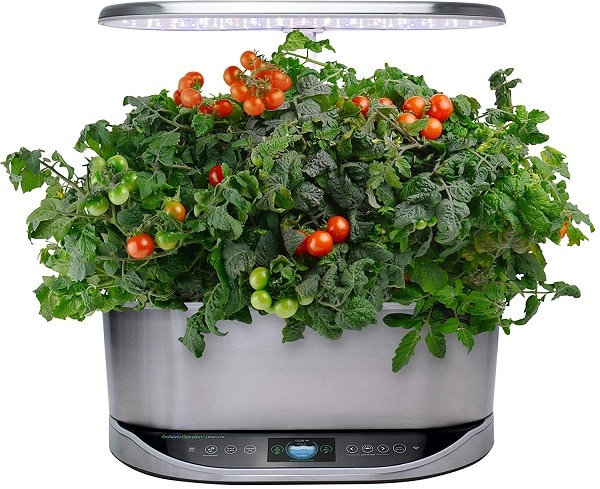
 AeroGarden Bounty Elite - Indoor Garden with LED Grow Light
AeroGarden Bounty Elite - Indoor Garden with LED Grow Light
- WiFi and Alexa Compatible, Stainless Steel Grow up to 9 plants, up to 24duim
- Includes everything you need to grow
- 50 watt LED Grow Lights, perfect spectrum for fast growth & big harvests
BONUS: Which Light is Best for Growing?
When it comes to indoor plant growing, the best light source will depend on the type of plant and the stage of growth. Here are some recommendations for the best lights for growing seedlings and flowering plants:
Best Lights for Growing Seedlings
LED grow lights are a great option for growing seedlings, as they provide the specific spectrum of light that young plants need for optimal growth. LED lights can also be adjusted to provide the right balance of blue and red light for each stage of growth, from germination to vegetative growth. Light-emitting diode lamps are energy-efficient and produce minimal heat, making them a safe and efficient option for small grow spaces.
Fluorescent tubes are also a good option for growing seedlings, as they provide a broad spectrum of light that is suitable for most types of plants. Fluorescent tubes emit very little heat, reducing the risk of plant damage, and can be adjusted to provide the specific spectrum of light needed at each stage of growth. Additionally, fluorescent lamps are affordable and readily available, making them a good choice for indoor gardeners on a budget.

Best Light for Flowering Plants
For flowering plants, high-pressure sodium (HPS) grow lights are a popular choice, as they emit a yellow-orange spectrum of light that is ideal for flowering and fruiting. HPS lights are high-intensity and can provide a significant amount of light to plants, making them suitable for larger grow operations or plants that require high levels of light. However, HPS lights are less energy-efficient than other types of grow lights and emit a lot of heat, which can be a disadvantage in warmer climates or during the summer months.
I think that LED grow lights can also be a good choice for flowering plants, as they can provide the specific spectrum of light that plants need for flowering and fruiting. LED lights can be adjusted to provide a higher concentration of red light, which is important for flowering, and can produce minimal heat, reducing the risk of plant damage.
FAQs
How long should I leave my grow lights on for indoor plants?
The duration of time that grow lights should be left on for indoor plants will depend on the type of plant, the stage of growth, and the intensity of the light source. As a general guideline, most indoor plants will need between 12 and 16 hours of light per day, but some plants may require more or less light depending on their specific needs. It is important to research the light requirements of your particular plants and adjust the duration of light accordingly.
Can I mix different types of grow lights for my indoor plants?
Yes, it is possible to mix different types of grow lights for indoor plants to provide a broader spectrum of light or as supplemental lighting. For example, some indoor gardeners may use a combination of LED and fluorescent lights to provide a broader spectrum of light that is suitable for all stages of plant growth. It is important to research the specific light requirements of your plants and adjust the combination of grow lights accordingly.
Can I use grow lights to grow any type of plant indoors?
While grow lights can provide the necessary light spectrum for most indoor plants, some plants may require specific light conditions, such as high-intensity light or a specific spectrum of light, to thrive.
It is important to research the specific light requirements of your plants and select the appropriate grow lights to ensure optimal growth and development. Additionally, other factors such as humidity, temperature, and soil conditions will also need to be considered when growing plants indoors.
What color light is best for plant growth?
Plants require a specific spectrum of light for optimal growth, which includes both blue and red wavelengths. Blue light is important for vegetative growth, while red light is important for flowering and fruiting. Grow lights that provide a balanced spectrum of blue and red light are typically the best for plant growth, as they can be adjusted to provide the specific spectrum of light that plants need at each stage of growth.
Can any light bulb be used as a grow light?
No, not all light bulbs are suitable for indoor plant growing. Regular light bulbs, such as incandescent or halogen bulbs, emit a limited spectrum of light that is not suitable for plant growth. Dedicated grow lights, such as LED, fluorescent, or HID lights, are designed specifically for indoor plant growing and provide the specific spectrum of light that plants need for optimal growth.
How much electricity do grow lights use?
The amount of electricity that grow lights use will depend on the type of light and its wattage. LED grow lights are typically the most energy-efficient, using anywhere from 30-50% less energy than other types of grow lights.
Fluorescent lights are also relatively energy-efficient, using about 75% less energy than incandescent bulbs. HID grow lights, on the other hand, use a significant amount of energy and can be expensive to operate. It is important to consider the energy consumption of grow lights when selecting a light source for indoor plant growing.
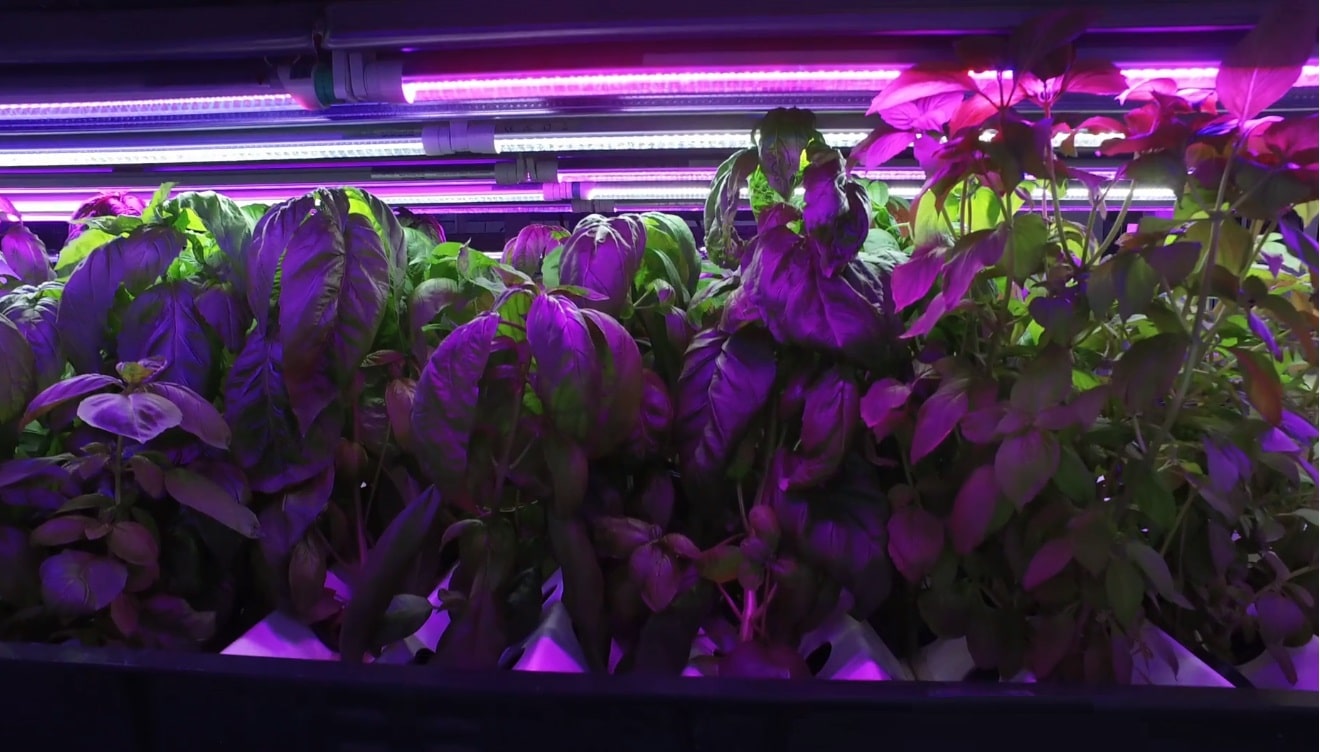
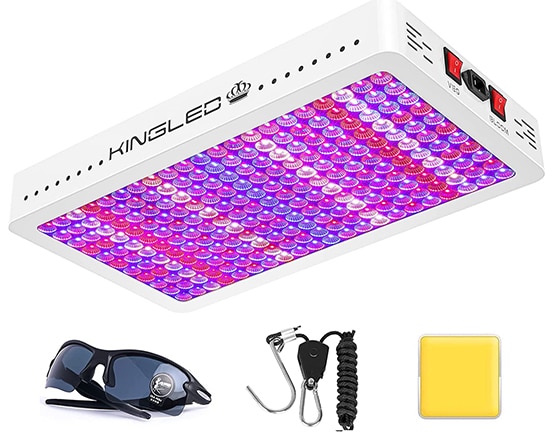
Leave a Reply